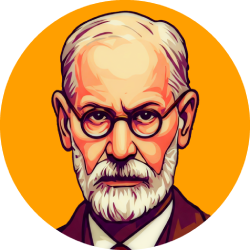The free association method is a fundamental technique in psychoanalysis, developed by Sigmund Freud. It consists of allowing the patient to speak freely about his thoughts, feelings and memories, without judgment or censorship. This helps to reveal the unconscious processes that influence one’s behavior and emotions.
Introduction to the Free Association Method
The idea behind free association is that by allowing the patient to speak without restrictions, it is possible to access the repressed thoughts and memories that are in the unconscious. This can help better understand the patient’s problems and find more effective solutions.
To apply this technique, the psychoanalyst creates a safe and welcoming environment where the patient feels comfortable sharing his thoughts and feelings. Then the patient is encouraged to talk about anything that comes to mind, without concern for judgment or criticism.
Historical Development of the Method
The free association method was developed by Freud in the early days of thepsychoanalysis. He was looking for a way to access unconscious processes that influenced human behavior. After experimenting with different techniques, such as hypnosis and suggestion, Freud found that free association was the most effective in revealing repressed thoughts and memories.
Over time, the technique of free association has become a key tool in psychoanalysis, being used by psychoanalysts around the world. It also inspired other therapies, such as cognitive behavioral therapy and humanistic therapy.
Benefits of the Free Association Method
Free Association offers several benefits to patients. Firstly, it helps identify the patterns of thought and behavior that are contributing to your problems. This may include limiting beliefs, fears and anxieties that are being repressed.
In addition, free association can help the patient process difficult emotions such as anger, sadness or guilt. By expressing these emotions safely and welcoming, the patient can start dealing with them more healthily.
Another benefit of free association is that it can help improve the patient’s self -awareness. By exploring their thoughts, feelings and memories, the patient can develop a deeper understanding of himself and his motivations.
Practical application of free association in everyday life
Free association is not only useful in a therapeutic environment, but can also be applied in everyday life. For example, when facing a problem or challenge, you can try to use the free association technique to generate creative ideas and solutions.
This may involve writing in a diary, talking to a friend or family member, or simply allowing your thoughts to flow without judgment. By doing so, you can find out new perspectives and insights that can help you solve the problem more effectively.
In addition, free association can be used to improve communication in personal and professional relationships. By carefully hearing the words and feelings of the other, you can develop a deeper understanding of your needs and desires.
In short, the free association method is a powerful tool for accessing unconscious processes that influence human behavior. With its practical application in everyday life, we can develop a deeper understanding of ourselves and others, and find more effective solutions to the challenges we face.


